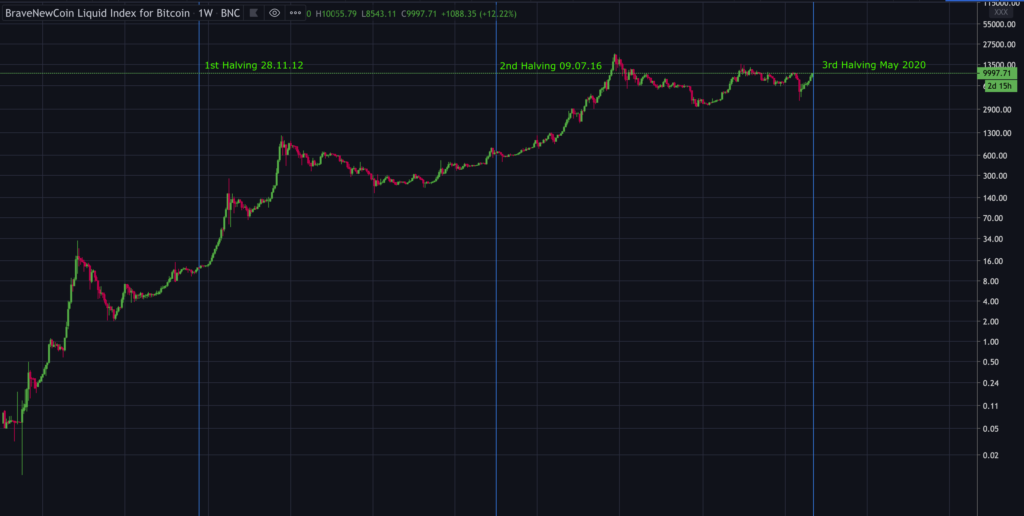The quadrennial event is predicted to take place on 11th May, although the exact Bitcoin halving date will be subject to various factors.
So what is Bitcoin halving? Why is it so important? What happened previously? And why are many people feeling uneasy about it?
Bitcoin blockchain: The concept and how it works
To understand Bitcoin halving, we need to take a look first into the underlying technology and how the Bitcoin blockchain operates.
The concept of Bitcoin as a peer-to-peer electronic cash system was introduced in a whitepaper by its mysterious inventor, Satoshi Nakamoto back in 2008. Initially meant as a solution to the double-spending issues in digital currency at the time, Nakamoto proposed a decentralized approach to transactions, which led to the creation of the blockchain.
While blockchain has evolved into a separate concept, Bitcoin was the first one to adopt it. That’s probably why it’s confusing for some people as they still think blockchain is Bitcoin.
As a decentralized network, it means that the Bitcoin blockchain doesn’t have an authoritative party that governs what happens within the network. Instead, it relies on lots of participants to determine what should or shouldn’t happen to the blockchain, which in Bitcoin’s case, whether or not a transaction can be added into the network as a new block.
These participants, also known as nodes, are computers around the world that store the Bitcoin blockchain, including its entire transactions history. The number of Bitcoin nodes is said to have reached almost 100,000 nodes as of May 2019. For these nodes to be able to come up with unanimous decisions, a set of rules, which is known as consensus algorithms, is required. There are several known consensus algorithms in crypto, but the one that Bitcoin uses is the Proof of Work (PoW).
You can learn more about the main differences between the Proof of Work and another popular consensus algorithm, the Proof of Stake (PoS) in our recent staking article.
In PoW, the process to generate a new block is called mining. In short, miners are competing with each other to solve complex cryptographic problems as fast as possible. The winner will get block reward – 12.5 Bitcoin at the moment – for each new block successfully created.
What is Bitcoin halving?
When Nakamoto invented Bitcoin, he already set that there will only be 21 million Bitcoins that will ever exist. He also coded into the blockchain that for every 210,000 blocks or about every four years, Bitcoin performs “halving”.
To be specific, Bitcoin halving is the process when the Bitcoin protocol cuts into half the block reward given to successful miners.
In the course of Bitcoin’s existence, the halving has happened twice so far. Back on 28th November 2012, the halving cut the block reward from 50 BTC to 25 BTC, then on 9th July 2016, which brought the reward to the current value of 12.5 BTC. The 3rd Bitcoin halving 2020 that will happen in just a couple more days will see the block reward being cut to 6.25 BTC.
While no one can really tell what was inside the mysterious inventor’s mind for choosing such a mechanism, Nakamoto can be seen pondering over several probabilities of his invention’s future value in one of his first public emails, soon after publishing the Bitcoin whitepaper. He pointed out inflation, where the purchasing power of a currency is falling and deflation, where the purchasing power of currency is rising.
Experts believe that the predetermined number makes Bitcoin a deflationary asset in nature as it makes Bitcoin scarce. Moreover, the halving mechanism will lower the rate of new Bitcoins being created and released into circulation, which would reduce the crypto’s overall supply.
Assuming the demand remains the same, based on the economic principle of supply-demand, when the supply is “low” and the demand is “high”, the value of an asset would increase. So, in theory, after the halving takes place, the value of Bitcoin would increase significantly.
Therefore, miners are still expected to feel incentivized, despite the reduced block reward.
But, is that really the case with Bitcoin? Or probably the more important question that everyone desperately wants the answer is, will the upcoming Bitcoin halving bring a significant raise to Bitcoin’s price?

Several massive upsurges in Bitcoin price history were said to be correlative to Bitcoin halving. Within a year following its first halving (2012), Bitcoin surged from $10 to more than $1,000. Meanwhile, the second halving triggered the Bitcoin price to rally from $650 to a remarkable $20,000, which is the highest value of Bitcoin so far, between 2016 and 2017. In both cases, Bitcoin price achieved lower highs, which is when an asset’s price falls, but still higher than the previous bottom.
However, not everyone believes that history will repeat itself in crypto. After all, it’s Bitcoin; anything could happen.
While there’s nothing that can be done during or after the Bitcoin halving countdown, besides wait and see, it’s always a good idea to find a reliable platform that has a proven track record to trade Bitcoin. Bitfinex has been in the business since 2012, which made us one of the longest-running exchanges in the crypto exchange business. We have an impeccable track record of providing reliable services to our users as well as the crypto community at large. What’s more, we have proven our resilience through crypto’s good and bad times. Even during the recent market crash when Bitcoin prices collapsed within mere hours on 12th March 2020, Bitfinex was the one that represented the majority of top-tier exchange trading volume, as research by CryptoCompare suggests.
The post appeared first on Bitfinex blog.

